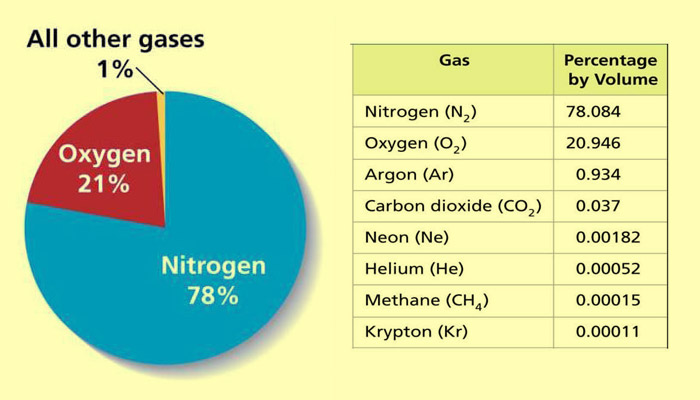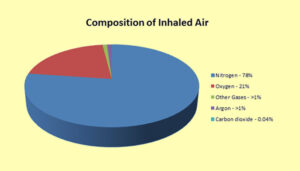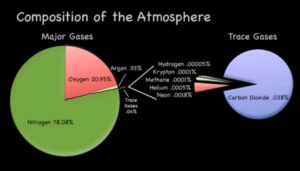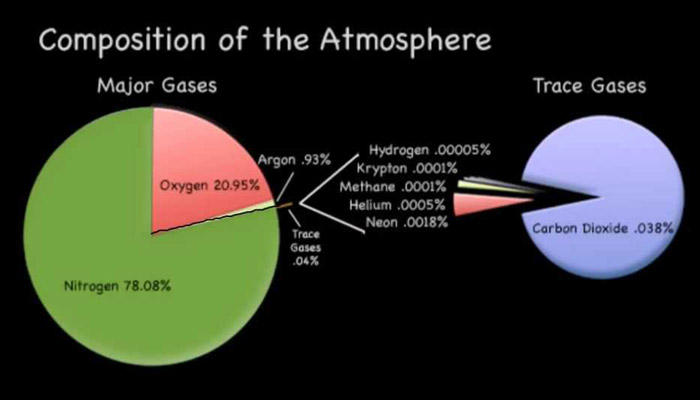In this article, we’ll look into the fascinating world of Helium, exploring Helium percentage in atmosphere, sources, concentration variations, importance, environmental impact, conservation efforts, and more. Helium, often associated with balloons and a high-pitched voice, is an intriguing element that plays a vital role in Earth’s atmosphere.

Table of Contents
0.000524 is the Helium Percentage in Atmosphere
Helium is not just a party gas; it’s a natural component of our atmosphere. However, compared to other gases, its presence is relatively sparse. Scientific measurements have allowed us to find out that the exact percentage of Helium in Earth’s atmosphere is 0.000524%.
Let’s take a break from the serious stuff and explore some fun facts about Helium. From its discovery to quirky uses, Helium has some surprising aspects. There are several myths surrounding Helium. We’ll debunk these misconceptions with scientific facts, separating fiction from reality.
Helium is not confined to Earth; it’s a cosmic element. This section will explore Helium’s presence in the universe and its role in scientific missions beyond our planet.
Primary Sources of Atmospheric Helium
While Helium occurs naturally, human activities have influenced its levels. Understanding the sources is crucial to managing Helium sustainably. This section will shed light on both natural and anthropogenic sources.
Helium levels vary across different regions. We’ll explore the geographic distribution of Helium and the factors contributing to these variations. Additionally, seasonal fluctuations add another layer of complexity to Helium concentration dynamics.
Technical difficulties in extracting Helium – Helium extraction is not without challenges. This section will delve into the technical hurdles scientists face in obtaining Helium and the delicate balance required between extraction and conservation.
Helium levels in the future – As Helium demand increases, predicting its future levels becomes crucial. We’ll explore scientific predictions and the role of emerging technologies in shaping the future of Helium on Earth.
Industrial Applications
Beyond being a fun element in balloons, Helium has critical industrial applications. From cooling systems to welding, we’ll uncover the diverse uses of Helium in various industries. Beyond its scientific aspects, Helium has economic significance. This section will examine the global market for Helium, trade dynamics, and its impact on various industries.
Helium’s Role in Climate Change
While Helium itself doesn’t contribute to climate change, its extraction and usage have environmental consequences. We’ll examine the environmental impact of Helium-related activities and the need for sustainable practices.
Recognizing the importance of Helium, efforts are underway to conserve this precious resource. This section will highlight ongoing initiatives and their impact on maintaining Helium levels.
In conclusion, Helium, though often associated with levity, carries significant weight in various aspects of our lives. Understanding its composition, sources, and implications is crucial for both scientific and practical reasons.
FAQ – Frequently Asked Questions
What is the primary source of Helium on Earth?
Helium primarily comes from the natural decay of radioactive elements in the Earth’s crust.
Does Helium have any environmental impact?
While Helium itself doesn’t contribute to environmental issues, its extraction processes and usage can have consequences.
How is Helium used in the medical field?
Helium is used in various medical applications, including cooling MRI magnets and assisting in respiratory treatments.
Are there alternatives to Helium for industrial applications?
While some applications have alternatives, Helium’s unique properties make it irreplaceable in certain industrial processes.
Is Helium extraction sustainable in the long run?
Balancing Helium extraction with conservation efforts is crucial for its long-term sustainability.






